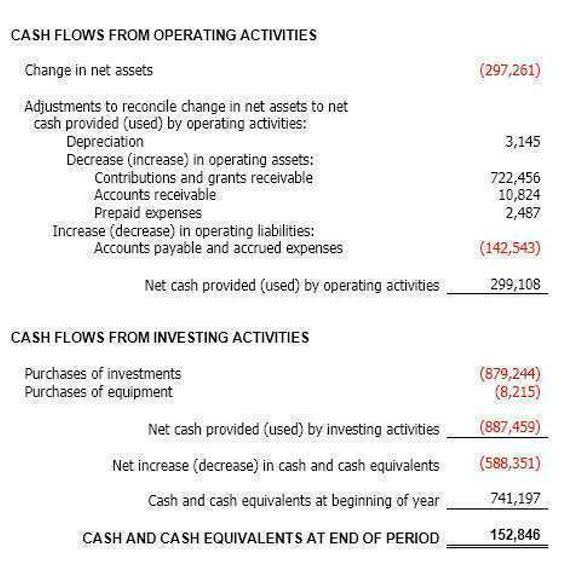
However, for accounting purposes the economic entity assumption results in the sole proprietorship’s business transactions being accounted for separately from the owner’s personal transactions. As the calculation shows, the weighted-average number of shares of common stock for the year was 1,325. If an investor owns 1,000 shares and the corporation has issued and has outstanding a total of 100,000 shares, the investor is said to have a 1% ownership interest in the corporation. Let us now take the example of a small business owner who is into the computer accessories business in the US. As per the balance sheet of the proprietorship firm for the financial year ended on March 31, 2018, the following information is available.
- The historical cost principle means that most of the amounts shown on the income statement reflect a corporation’s vast number of actual transactions that occurred with parties outside of the corporation.
- The income statement is also referred to as the profit and loss statement, P&L, statement of income, and the statement of operations.
- In the United States, the statement of changes in equity is also called the statement of retained earnings.
- If this value is negative, a business may be headed for bankruptcy, especially if it has a substantial debt load.
- Any analysis should take into account other financial statements and economic indicators to provide a comprehensive outlook.
Liability T-account transactions
However, it’s a crucial tool for helping business owners evaluate potential investments and measure their business’s performance and worth. Except, we see paid-in capital in excess of par actually increased a bit in 2019 as a result of issuance of new shares. In Note 6 to the financial statements on page 56, we see there were in fact four million shares (rounded) issued to employees as part of their non-cash compensation. A $0.05 par value would be $200,000, well below the rounding limit on these financials. In any case, the increase to owners’ equity as a result of additional paid-in capital during 2019 was $11.001 million. A statement of changes in shareholders equity presents a summary of the changes in shareholders’ equity accounts over the reporting period.
Is Stockholders’ Equity Equal to Cash on Hand?

The task of researching and developing US GAAP is carried out by the non-government organization Financial Accounting Standards Board or FASB (pronounced “faz-bee”). Equity is anything invested in the company by its owner or the sum of the total assets minus the sum of the company’s total liabilities. E.g., Common stock, additional paid-in capital, preferred stock, retained earnings, and the accumulated other comprehensive income. Statement of stockholders’ equity helps users of the financial statements to know and distinguish the causes that bring a change in the owners’ equity over the period of time.
Free Cash Flow
It provides transparency for investors to see changes in the cash flow specifically equity accounts and the activities that lead to such shift in the shareholder’s equity. This financial statement reports the amounts of assets, liabilities, and net assets as of a specified date. This financial statement is similar to the balance sheet issued by a company. The balance sheet reports the assets, liabilities, and owner’s (stockholders’) equity at a specific point in time, such as December 31. The balance sheet is also referred to as the Statement of Financial Position.
Stockholders’ Equity Equation

They are both taken from corresponding and comparing figures of the statement, which will then be shifted to the statement of stockholders’ equity. Other comprehensive income includes certain gains and losses excluded from net earnings under GAAP, which consists primarily of foreign currency translation adjustments. Generally a long term liability account containing the face amount, par amount, or maturity amount of the bonds issued by a company that are outstanding as of the balance sheet Interior Design Bookkeeping date. The original cost incurred to acquire an asset (as opposed to replacement cost, current cost, or cost adjusted by a general price index). If a company purchased land in 1980 for $10,000 and continues to hold that land, the company’s balance sheet in the year 2024 will report the land at $10,000 (even if the land is now worth $400,000).

Who Is a Statement of Stockholders’ Equity Useful For?
It is the amount left with or kept aside by the company after it pays the dividend from net income. Normally, the investors and firms decide to reuse this amount and reinvest the same in the company. The amount of dividend payments to the shareholders is up to the company. This is the amount investors paid above the par value of a company’s stocks. This quantity increases when a corporation issues new shares and decreases when it buys back shares. If the company issued new shares during the period, the proceeds from the issuance would increase equity.
To grasp the relationship fully, let’s start with where these statements connect. The Statement of Shareholder Equity reflects the changes in equity over a specific time frame, including new equity investments, retained earnings, or loss, and any paid dividends. Understanding and analyzing changes in shareholders equity can provide insightful information on the financial health and performance of a company. Evaluating these changes over different periods, such as annually or quarterly, may capture the definitive statement of stockholders equity example shifts in the company’s capital structure and overall solvency. When a company earns income, this increases equity, much like retained earnings. The difference is that net income has not been allocated yet; it could go into retained earnings (if it isn’t distributed as dividends) or it might be distributed to shareholders.

It might be the result of persistent losses, high amounts of dividends being paid out, or even a corporation issuing more debt. Such changes could suggest potential financial distress, and may, in some scenarios, even hint at bankruptcy risks. An increase in shareholders equity typically signals a positive financial condition. It may indicate that the company is generating profits, either through operational activities or through successful investments. This, in turn, directly impacts the shareholders as increased equity suggests greater return on their investment, fostering greater confidence among investors.
Contributors to Shareholders Equity
An accounting guideline that requires information pertinent to an investing or lending decision to be included in the notes to financial statements or in other financial reports. A balance sheet with classifications (groupings or categories) such as current assets, property plant and equipment, current liabilities, long term liabilities, etc. A current liability account that reports the adjusting entries amounts owed to employees for hours worked but not yet paid as of the date of the balance sheet. Under the accrual basis of accounting, revenues are recorded at the time of delivering the service or the merchandise, even if cash is not received at the time of delivery.
